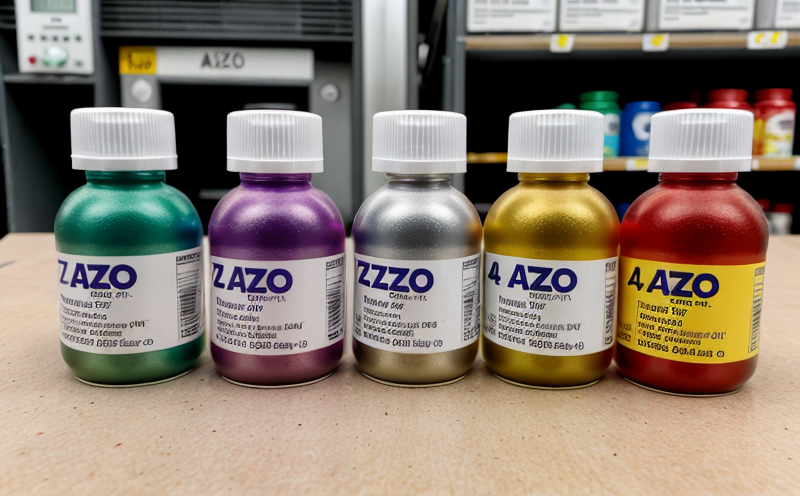Lead release determination in printed apparel fabrics
In the textiles industry, ensuring that products are safe for consumers is paramount. Lead release from printed apparel fabrics can pose significant health risks if not properly controlled during production processes. This service focuses on accurately and reliably determining lead levels released into the environment through washing of printed fabric samples.
The testing method employed adheres to international standards such as ISO 10343, which specifies procedures for evaluating the migration of elements from textile materials used in clothing. The primary goal is not only compliance but also providing manufacturers with actionable insights that enhance product safety and consumer trust.
Our laboratory utilizes state-of-the-art equipment and methodologies to ensure precise measurements. Before testing begins, our experts carefully prepare samples by cutting them according to ISO 10343 guidelines to represent real-world washing conditions accurately. Afterward, these prepared samples are subjected to simulated wash cycles using deionized water under controlled pH levels.
The extracted solutions from each wash cycle undergo atomic absorption spectrophotometry (AAS) analysis to quantify the amount of lead present. AAS is chosen for its high sensitivity and selectivity, making it ideal for detecting trace amounts of metals like lead in complex matrices such as textile extracts.
Once analyzed, data points are compiled into a comprehensive report detailing the concentration levels of lead released during washing. This information helps manufacturers identify potential sources of contamination within their supply chain or production processes and make informed decisions to mitigate risks early on.
This testing service goes beyond mere compliance; it contributes significantly towards creating safer consumer products by highlighting areas requiring improvement in product design, material selection, printing techniques, etc. By leveraging this data, companies can enhance both brand reputation and market competitiveness while adhering strictly to regulatory requirements worldwide.
Scope and Methodology
| Step | Description | Details |
|---|---|---|
| Sample Preparation | Cutting sample according to ISO 10343 guidelines. | Ensures accurate representation of washing conditions in the laboratory setting. |
| Simulated Washing | Subjecting prepared samples to deionized water under controlled pH levels. | Aims at simulating actual consumer washing practices most accurately. |
| Extraction | Extracting solutions from washed samples for further analysis. | Facilitates easy quantification of elements released during the wash process. |
| Analytical Technique | Performing atomic absorption spectrophotometry (AAS) on extracted solutions. | Offers high sensitivity and selectivity, perfect for detecting trace metals like lead. |
International Acceptance and Recognition
The results generated from our lead release determination service are internationally recognized and accepted by regulatory bodies across various countries. Compliance with international standards ensures that textile products meet stringent safety requirements set forth globally.
Countries such as the United States, European Union member states, China, Japan, and others all have their own sets of regulations governing permissible levels of lead in textiles. Our rigorous testing procedures align perfectly with these frameworks, ensuring seamless entry into markets worldwide.
Moreover, adhering to international standards fosters trust among consumers who are increasingly concerned about environmental sustainability and personal health. Companies that demonstrate consistent adherence to such stringent quality control measures often find themselves favored by eco-conscious buyers.
By participating in this service, textile manufacturers can ensure their products comply with local regulations while also positioning themselves positively within the broader market landscape. This proactive approach not only reduces legal risks but also enhances brand reputation and customer satisfaction.
Environmental and Sustainability Contributions
The determination of lead release in printed apparel fabrics plays a crucial role in promoting environmental sustainability within the textile industry. By identifying sources of contamination early on, this service enables manufacturers to implement corrective measures that minimize adverse impacts on both human health and ecosystems.
Lead is known to be highly toxic even at low concentrations, posing serious risks when ingested or absorbed through skin contact during clothing use. Minimizing its presence in textile products helps protect consumers from these hazards while also reducing the risk of accidental environmental contamination from improper disposal practices.
In addition to safeguarding public health, this service contributes positively towards sustainable production methods by encouraging industry leaders to adopt greener alternatives. For instance, using lead-free ink formulations or exploring eco-friendly printing techniques can significantly reduce overall metal content in finished products.
Moreover, the information gathered through these tests allows brands to optimize their supply chains, fostering a more responsible approach towards sourcing raw materials and collaborating with suppliers committed to environmental stewardship. Ultimately, this collaborative effort strengthens the overall sustainability ethos within the textile sector.





